Abstract
Specialist infertility practice was studied in a group of 708 couples within a population of residents of a single health district in England. They represented an annual incidence of 1.2 couples for every 1000 of the population. At least one in six couples needed specialist help at some time in their lives because of an average of infertility of 21/2 years, 71% of whom were trying for their first baby. Those attending gynaecology clinics made up 10% of new and 22% of all attendances. Failure of ovulation (amenorrhoea or oligomenorrhoea) occurred in 21% of cases and was successfully treated (two year conception rates of 96% and 78%). Tubal damage (14%) had a poor outlook (19%) despite surgery. Endometriosis accounted for infertility in 6%, although seldom because of tubal damage, cervical mucus defects or dysfunction in 3%, and coital failure in up to 6%. Sperm defects or dysfunction were the commonest defined cause of infertility (24%) and led to a poor chance of pregnancy (0-27%) without donor insemination. Obstructive azoospermia or primary spermatogenic failure was uncommon (2%) and hormonal causes of male infertility rare. Infertility was unexplained in 28% and the chance of pregnancy (overall 72%) was mainly determined by duration of infertility. In vitro fertilisation could benefit 80% of cases of tubal damage and 25% of unexplained infertility--that is, 18% of all cases, representing up to 216 new cases each year per million of the total population.
Full text
PDF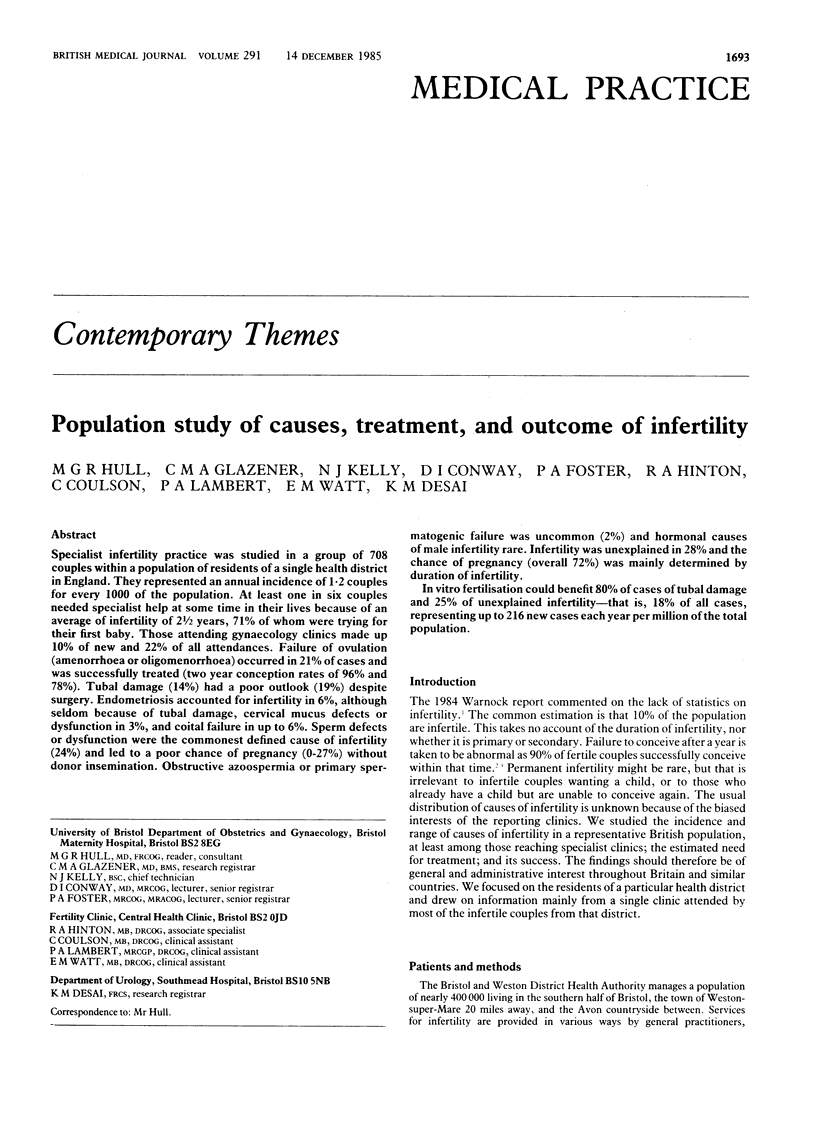
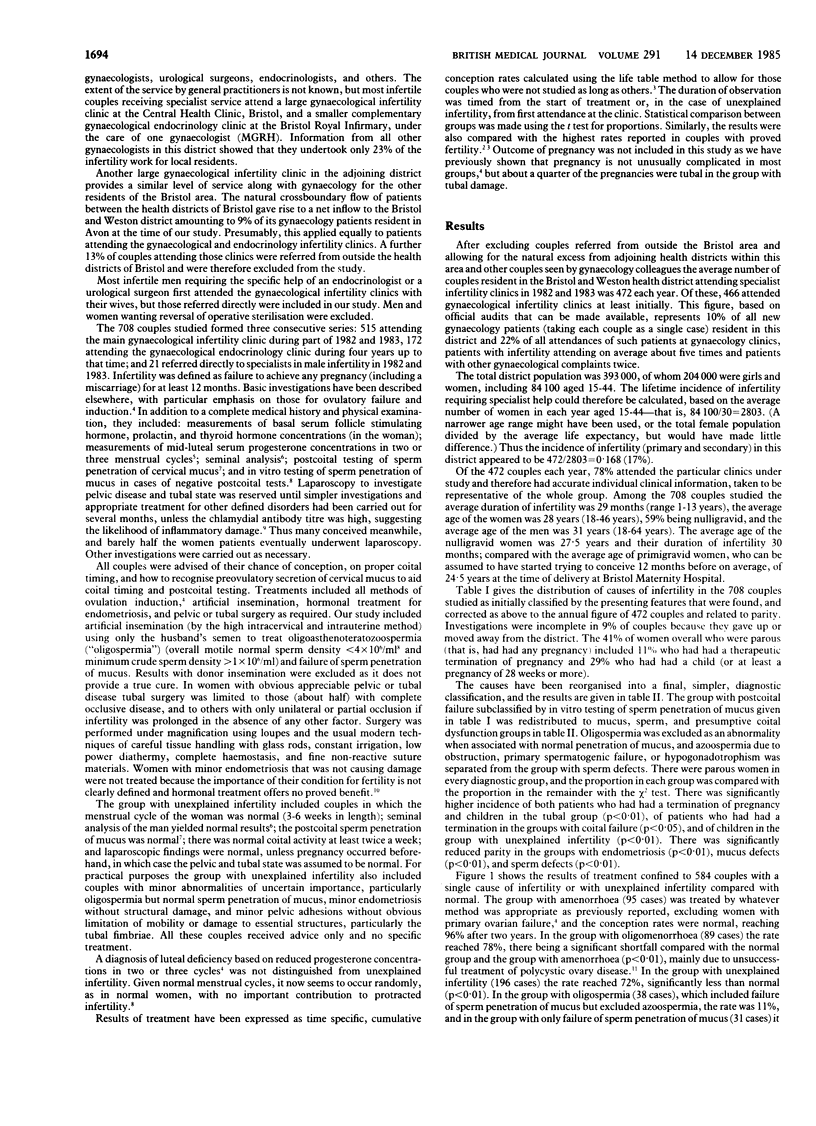
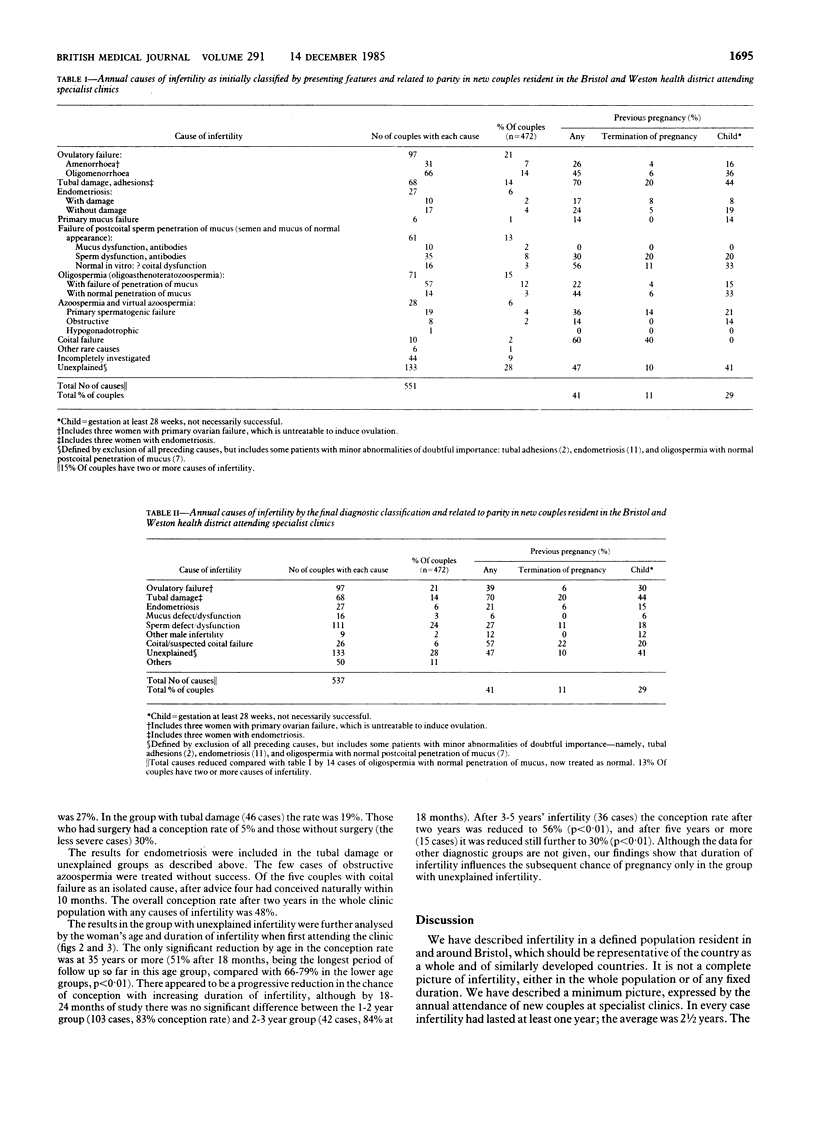
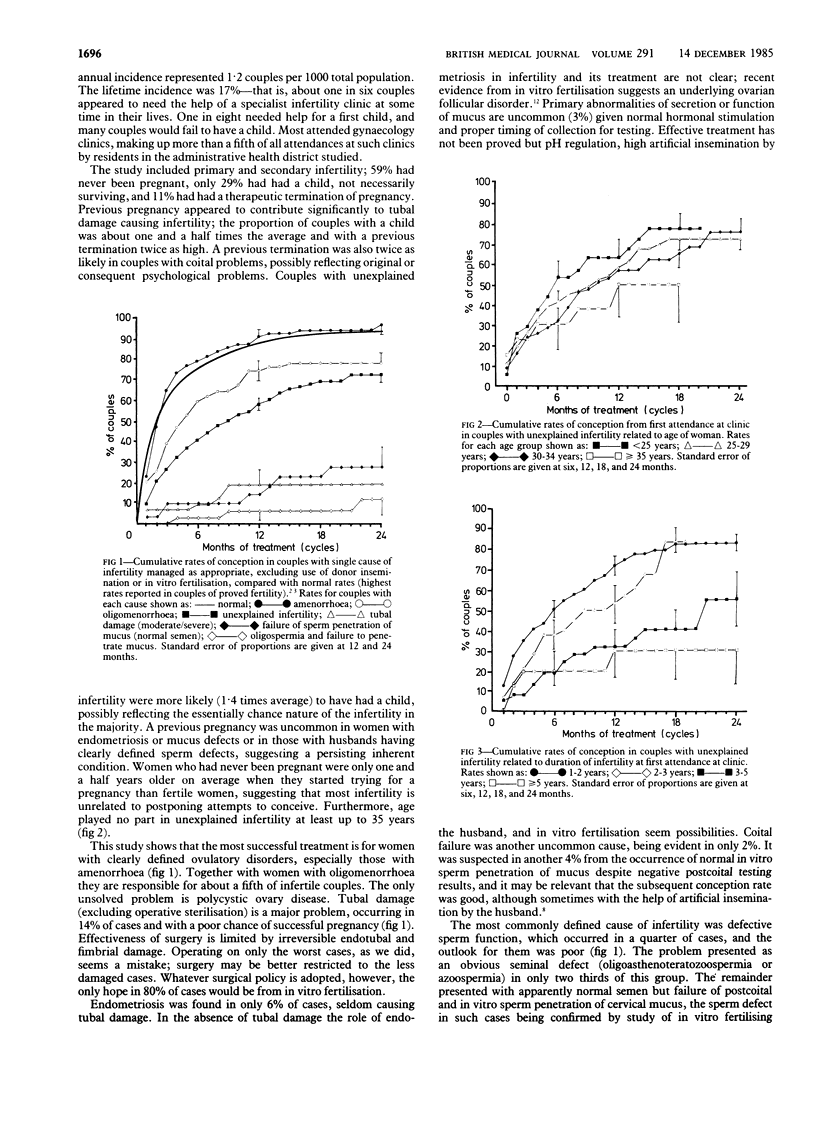
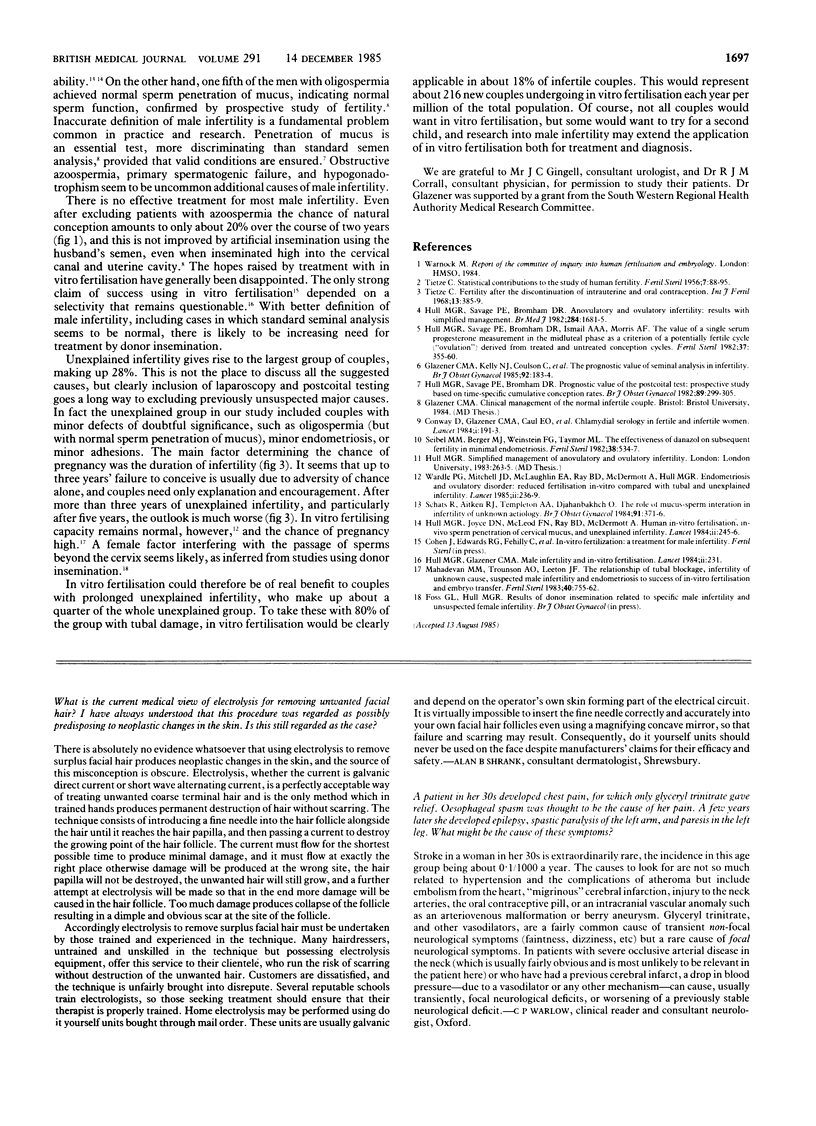
Selected References
These references are in PubMed. This may not be the complete list of references from this article.
- Conway D., Glazener C. M., Caul E. O., Hodgson J., Hull M. G., Clarke S. K., Stirrat G. M. Chlamydial serology in fertile and infertile women. Lancet. 1984 Jan 28;1(8370):191–193. doi: 10.1016/s0140-6736(84)92113-5. [DOI] [PubMed] [Google Scholar]
- Hull M. G., Joyce D. N., McLeod F. N., Ray B. D., McDermott A. Human in-vitro fertilisation, in-vivo sperm penetration of cervical mucus, and unexplained infertility. Lancet. 1984 Aug 4;2(8397):245–246. doi: 10.1016/s0140-6736(84)90296-4. [DOI] [PubMed] [Google Scholar]
- Hull M. G., Savage P. E., Bromham D. R. Anovulatory and ovulatory infertility: results with simplified management. Br Med J (Clin Res Ed) 1982 Jun 5;284(6330):1681–1685. doi: 10.1136/bmj.284.6330.1681. [DOI] [PMC free article] [PubMed] [Google Scholar]
- Hull M. G., Savage P. E., Bromham D. R., Ismail A. A., Morris A. F. The value of a single serum progesterone measurement in the midluteal phase as a criterion of a potentially fertile cycle ("ovulation") derived form treated and untreated conception cycles. Fertil Steril. 1982 Mar;37(3):355–360. doi: 10.1016/s0015-0282(16)46095-4. [DOI] [PubMed] [Google Scholar]
- Hull M. G., Savage P. E., Bromham D. R. Prognostic value of the postcoital test: prospective study based on time-specific conception rates. Br J Obstet Gynaecol. 1982 Apr;89(4):299–305. doi: 10.1111/j.1471-0528.1982.tb04700.x. [DOI] [PubMed] [Google Scholar]
- Mahadevan M. M., Trounson A. O., Leeton J. F. The relationship of tubal blockage, infertility of unknown cause, suspected male infertility, and endometriosis to success of in vitro fertilization and embryo transfer. Fertil Steril. 1983 Dec;40(6):755–762. doi: 10.1016/s0015-0282(16)47475-3. [DOI] [PubMed] [Google Scholar]
- Schats R., Aitken R. J., Templeton A. A., Djahanbakhch O. The role of cervical mucus--semen interaction in infertility of unknown aetiology. Br J Obstet Gynaecol. 1984 Apr;91(4):371–376. doi: 10.1111/j.1471-0528.1984.tb05926.x. [DOI] [PubMed] [Google Scholar]
- Seibel M. M., Berger M. J., Weinstein F. G., Taymor M. L. The effectivenss of danazol on subsequent fertility in minimal endometriosis. Fertil Steril. 1982 Nov;38(5):534–537. doi: 10.1016/s0015-0282(16)46630-6. [DOI] [PubMed] [Google Scholar]
- TIETZE C. Statistical contributions to the study of human fertility. Fertil Steril. 1956 Jan-Feb;7(1):88–95. doi: 10.1016/s0015-0282(16)32231-2. [DOI] [PubMed] [Google Scholar]
- Tietze C. Fertility after discontinuation of intrauterine and oral contraception. Int J Fertil. 1968 Oct-Dec;13(4):385–389. [PubMed] [Google Scholar]
- Wardle P. G., Mitchell J. D., McLaughlin E. A., Ray B. D., McDermott A., Hull M. G. Endometriosis and ovulatory disorder: reduced fertilisation in vitro compared with tubal and unexplained infertility. Lancet. 1985 Aug 3;2(8449):236–239. doi: 10.1016/s0140-6736(85)90289-2. [DOI] [PubMed] [Google Scholar]


